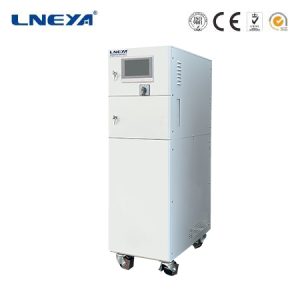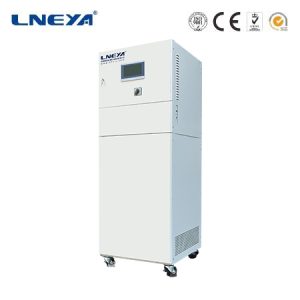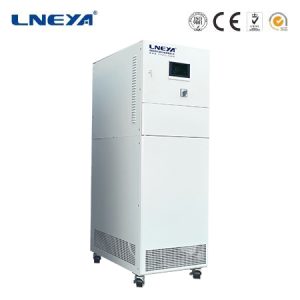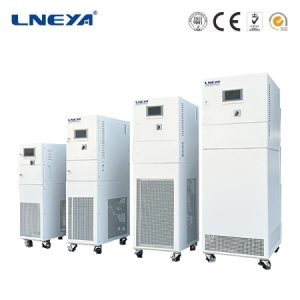Introduction to Water-Cooled Chiller Plants
In the realm of heating, ventilation, and air conditioning (HVAC) systems, water-cooled chiller plants play a pivotal role in providing effective cooling solutions for various commercial and industrial settings. These plants are designed to maintain a comfortable and controlled environment by regulating the temperature and humidity levels within a building. This article aims to offer an in-depth understanding of water-cooled chiller plants, their components, operational mechanisms, and the factors that contribute to their efficiency and environmental footprint.

Components of a Water-Cooled Chiller Plant
A typical water-cooled chiller plant consists of several key components that work in unison to achieve optimal cooling:
Chiller Unit: The chiller unit is the heart of the system, responsible for cooling the water that is circulated throughout the building. It uses a refrigeration cycle to transfer heat from the building’s interior to the exterior, thus lowering the internal temperature.
Cooling Tower: The cooling tower’s primary function is to dissipate the heat absorbed by the chiller unit into the atmosphere. It does this by circulating the heated water through a series of fill materials, where it comes into contact with air, promoting heat transfer and cooling the water.
Pumps: Pumps are used to circulate water between the chiller unit and the cooling tower, as well as to distribute the cooled water throughout the building’s HVAC system.

Water Distribution System: This system includes a network of pipes and valves that direct the cooled water to the various zones within the building, ensuring even temperature control.
Control System: A sophisticated control system monitors and adjusts the operation of the chiller plant to maintain the desired temperature and efficiency levels.
Operation of Water-Cooled Chiller Plants
The operation of a water-cooled chiller plant involves a series of steps that work together to cool the building:
Chiller Operation: The chiller unit cools the water by compressing refrigerant gas, which then condenses and releases heat. The cooled refrigerant absorbs heat from the water, thereby lowering its temperature.
Heat Dissipation: The heated water from the chiller is sent to the cooling tower, where it is cooled through evaporation and heat exchange with the ambient air.
Water Circulation: Once the water is cooled in the tower, it is pumped back to the chiller unit to be recooled, creating a continuous loop.

Temperature Regulation: The control system constantly monitors the temperature of the water and adjusts the operation of the chiller and cooling tower to maintain the set temperature.
Benefits of Water-Cooled Chiller Plants
Water-cooled chiller plants offer several advantages over other cooling systems:
High Efficiency: These plants are highly efficient, particularly in larger buildings where they can provide a significant cooling capacity with minimal energy consumption.
Scalability: They can be easily scaled to accommodate the cooling needs of growing facilities or to be integrated into existing systems.
Reliability: With proper maintenance, water-cooled chiller plants are known for their reliability and long service life.
Environmental Considerations: When compared to air-cooled systems, water-cooled chiller plants can reduce the heat island effect and have a lower environmental impact.
Maintenance and Energy Efficiency
Proper maintenance is crucial for the optimal performance and longevity of a water-cooled chiller plant. Regular inspections, cleaning of the cooling tower, and monitoring of the chiller’s refrigerant levels are essential. Additionally, energy efficiency can be further enhanced by:
Using Variable Frequency Drives (VFDs): VFDs can regulate the speed of the pumps, reducing energy consumption during periods of lower demand.
Implementing Smart Controls: Advanced control systems can optimize the operation of the plant based on real-time data, further reducing energy use.
Regular Maintenance: Keeping the system clean and well-maintained ensures that it operates at peak efficiency.
Environmental Impact and Sustainability
Water-cooled chiller plants can have a lower environmental impact compared to air-cooled systems due to their higher efficiency and reduced heat rejection. However, it is essential to consider the sourcing of water and the use of environmentally friendly refrigerants to minimize the ecological footprint.
Conclusion
Water-cooled chiller plants are a vital part of modern HVAC systems, providing efficient and reliable cooling solutions for a variety of applications. By understanding their components, operation, and maintenance requirements, facility managers and engineers can ensure that these systems operate at their best, offering both comfort and environmental sustainability. As technology advances, the efficiency and sustainability of water-cooled chiller plants will continue to improve, making them an even more attractive option for cooling needs.
 LNEYA
LNEYA
 简体中文
简体中文















































































